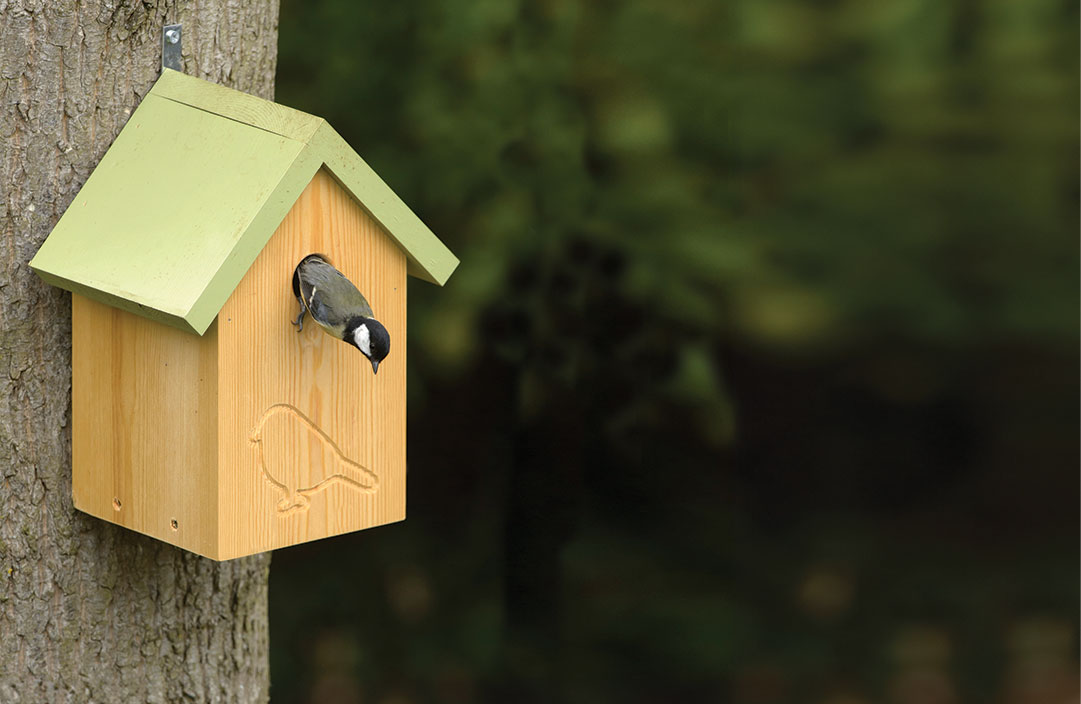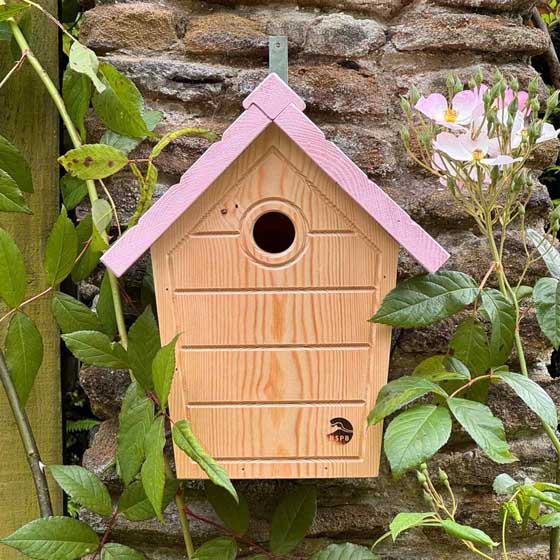When should you put up a nest box? And our top nest box tips
Placing a nest box in your garden is one of the simplest ways you can help support local birds. Each year, more and more bird species struggle to find safe places to shelter and raise their young, so putting a bird house up in your garden is a relatively easy and inexpensive way to offer birds some much-needed support. Nest boxes come in a range of different shapes and sizes for different bird species, and provide a safe, secure place for birds to nest and shelter in the colder months.
All RSPB nest boxes are made from high quality, sustainable timber and built with birds’ safety as a priority. They provide good insulation as well as ventilation, keeping birds warm in winter and cool in summer.
How to choose a nest box
When you first come to choosing a nest box, the choice on offer can be a little overwhelming. This is because different species prefer different-sized boxes and different-sized entrance holes. The entrance hole should be large enough for the bird to fit through comfortably, but small enough that predators can’t get in. Nest boxes with an outside perch are an absolute no-no, as birds don’t need this to gain entry, and it only makes it easier for predators to gain access.
Standard nest boxes
The majority of nest boxes you’ll see on the market are the ‘standard’ or ‘classic’ variety – a simple rectangular box with a gable roof. The key difference in this type of nest box is the entrance hole size.
Small birds like Blue Tits and Coal Tits favour 25mm entrance holes, whereas species such as House Sparrows, Great Tits and Nuthatches prefer a 32mm hole. Our Cabin nest box is a great option here – it has the standard 32mm entrance hole, but a 25mm nest box plate can be easily added if you want to restrict access to just smaller species.
Larger birds like Starlings will need a 45mm nest hole, so our Apex Starling nest box is a great option. It’s bigger in overall size too to accommodate the Starling’s larger size.
Open-fronted nest boxes
Species like Robins and Wrens prefer nesting in bushes and dense undergrowth, so our Open-fronted nest boxes are ideal here. Choose from our Apex open front nest box or Lodge open front nest box, or opt for our Brushwood open nester, depending on your preference.
Nest boxes for Swallows, House Martins and Swifts
Swallows, House Martins and Swifts have more specific needs as they nest in the eaves of buildings. Their numbers have been declining over the years, due to the loss of more traditional farm buildings and the increase in more modern buildings overall. Therefore, it’s more important than ever to help support these species by installing a nest box or cup that sits under the eaves of your house.
Our House Martin nest cup has been specially designed for this species to nest in. With a rough texture to the bowl as well as a central entrance scoop, it replicates the shape and form of natural House Martin nests.
Our Swallow nest cup has been made to the precise dimensions of nests built by Swallows and is securely fixed to sustainable timber backboards for easy installation.
Our Swift nest box fits directly beneath even the narrowest of eaves and its sloping roof makes it harder for predators to gain purchase. It has a 28mm x 65mm entry hole which has been designed to keep Starlings out and it also features an internal nest cup. The timber nest box offers both protection from predators and insulation for nesting Swifts.
Where to put up a nest box
Where you position your nest box is going to be key if you want to ensure garden birds take up residency there. Birds need somewhere safe, comfortable and secure to nest, so make sure you consider these things when positioning your nest box in your outdoor space.
Ensure your nest box is positioned away from bird feeders as the activity here can be disturbing for nesting birds. You’ll also want to ensure the bird box is not in direct sunlight and is somewhat protected from all weathers – the front of the nest box should be angled slightly downwards to stop rain from entering. Directions facing between north and east are best for this.
Nest boxes should be positioned roughly 3-5 metres from the ground and there should be a clear flight path for the bird to enter the box. Make sure you place the bird box away from potential predators like cats and Squirrels. Swift boxes should be at least 5 metres high with a 5-metre clearance in front of it.
For open-fronted nest boxes, you’ll need to place them somewhere hidden, ideally on a fence or wall with lots of shrubbery and creeping plants to keep it somewhat concealed.
When to put up a nest box
While you can put a nest box up at any time of year, we find autumn is a great time because it gives birds a chance to get used to its appearance before choosing to nest in it come early spring. Also, many birds will roost in nest boxes over the winter to keep warm, so it’s worth putting your nest box up earlier rather than later.
Nest box cleaning
It’s helpful to clean your bird boxes out after each nesting season, so that they’re ready for the next breeding season. We recommend cleaning them annually, between September and January at the very latest. Make sure you check the box’s contents before you proceed with cleaning, as some birds can nest later or earlier in the season.
Use gloves to empty out any remnants of the previous nest, before pouring boiling water on the inside of the nest – this can prevent the risk of parasites in nests the following season. Make sure the box is fully dried before you put it back up. Please note: if any unhatched eggs are found in the box, they can only legally be removed from September to January in England and Wales and from August to January in Scotland, and they must be destroyed once removed.
